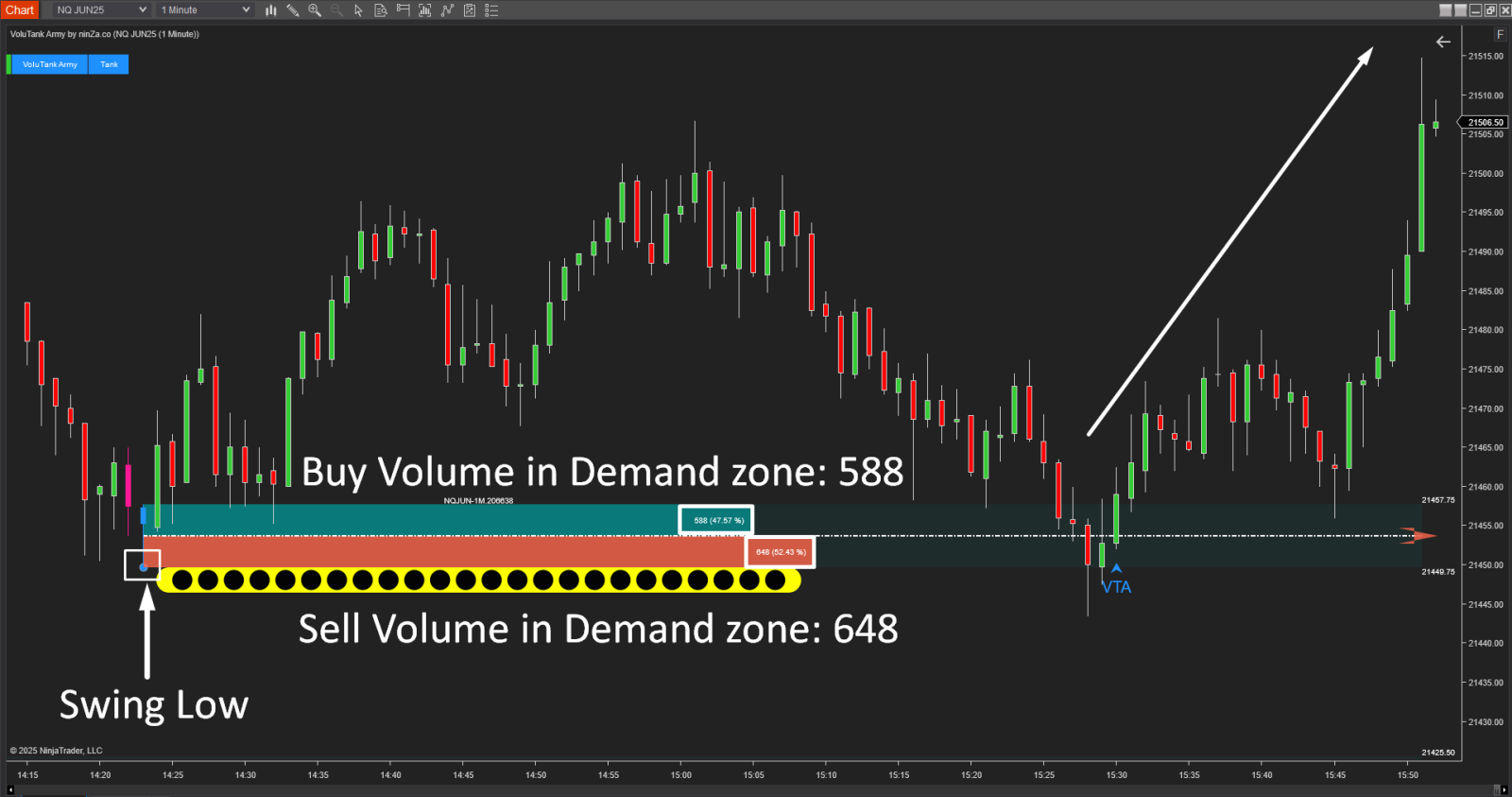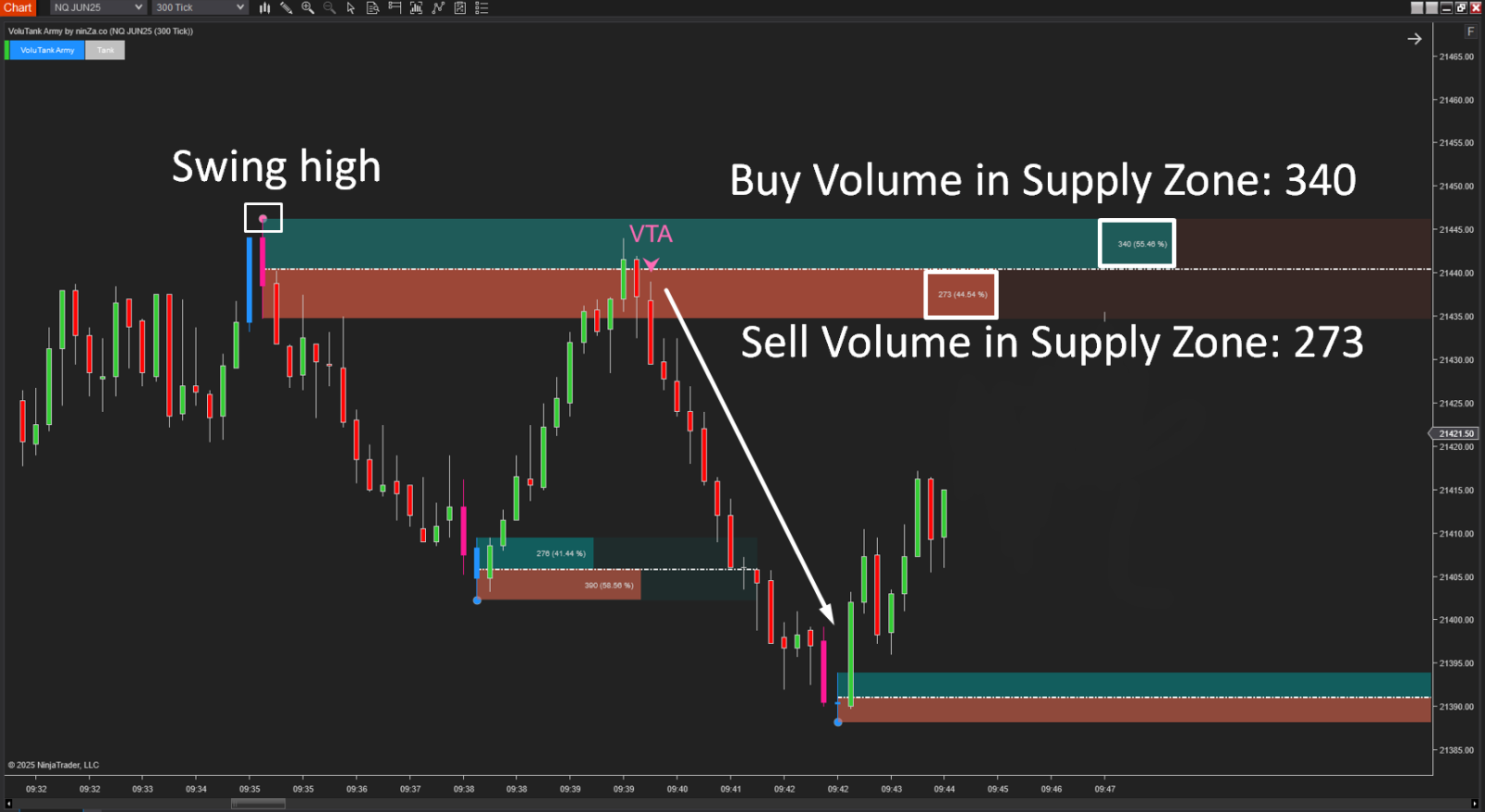At first glance, this seems like a contradiction. But when you truly understand market psychology, institutional behavior, and how to read volume correctly, you’ll realize this isn’t a mistake - it’s actually one of the most important insights you can gain.
Let’s break it down with the VoluTank Army approach, combining volume logic with swing structure and emotional exhaustion points in price.
What Volume Really Tells You: Context is Everything
Heavy volume doesn’t just mean “a lot of trades happened.” It means significant money moved - but:
Volume alone doesn’t tell you who’s in control.
It only becomes meaningful when read in the right place, at the right time, with the right price reaction.
🔍 Key questions to ask:
1. Where is the volume spike happening? (Supply, Demand, or random chop?)
2. When does it occur? (After a strong move, during a reversal?)
3. How does price react to that volume? (Breakout, absorption, reversal?)
✅ When read in proper context, volume can reveal who’s taking control.
❌ If read in isolation, volume can easily mislead you.
Demand Zones: Where Buyers Absorb Panic Selling
In Demand Zones:
You often see a spike in selling volume
Why? Because this is where sellers (panic sellers, stop hunters, breakdown traders) dump their positions
However, smart buyers (limit orders) are waiting below, absorbing every sell order
Once selling dries up, price reverses upward
➡️ So yes, the sell volume is high — but it’s the buyers who are actually in control by absorbing the panic.

Supply Zones: Where Sellers Absorb Aggressive Buying
In Supply Zones:
Price pushes up, and FOMO buyers jump in aggressively (especially breakout traders)
But smart sellers are waiting with limit sell orders
These buy orders get absorbed, and price can’t break higher → reversal begins
➡️ You see high buy volume, but it’s trapped buying - and sellers are dominating by soaking it all up.

Swing Points: Exhaustion Zones of the Active Side
At VoluTank Army, we emphasize this crucial concept:
The most powerful Supply and Demand zones often form at key Swing Highs and Swing Lows.
Why? Because these are points of emotional climax and exhaustion:
🔼 Swing High → Supply Zone:
Buyers aggressively try to push higher
They commit hard, expecting a breakout
But when no further buyers show up — and sellers absorb the move — price collapses
Heavy buy volume appears, but it marks the final stand of buyers
🔽 Swing Low → Demand Zone:
Sellers panic and unload massively
Smart money absorbs it all — price reverses up
Heavy sell volume appears, but it marks the last wave of capitulation
Volume doesn’t lie — but you must read it in context. If you found this helpful, leave a comment or share it. Thank you so much!!
VoluTank Army: https://ninza.co/product/volutank-army